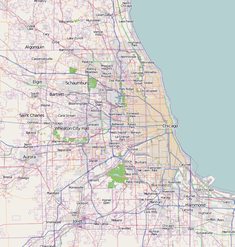Pullman District
| Pullman National Monument | |
|---|---|

Administration and Factory Complex
|
|
| Location | Chicago |
| Coordinates | 41°41′50″N 87°36′34″W / 41.69722°N 87.60944°WCoordinates: 41°41′50″N 87°36′34″W / 41.69722°N 87.60944°W |
| Built | Construction begun in 1880 |
| Architect | Solon Spencer Beman and Nathan F. Barrett |
| Architectural style(s) | Queen Anne, Gothic Revival |
| Governing body | U.S. National Park Service |
| Website | Pullman National Monument |
| Designated | February 19, 2015 |
| Official name: Pullman Historic District | |
| Designated | October 8, 1969 |
| Reference no. | 69000054 |
| Designated | December 30, 1970 |
| Designated | October 16, 1972 |
Pullman National Monument, also known as The Pullman District and Pullman Historic District, is located in Chicago and was the first model, planned industrial community in the United States. The district is significant for its historical origins in the Pullman Company, one of the most famous company towns in the United States, and scene of the violent 1894 Pullman strike. It was built for George Pullman as a place to produce the famous Pullman sleeping cars.
Located in what is now the Pullman community area of Chicago, the district includes the Pullman factory and also the Hotel Florence, named after George Pullman's daughter. Also within the district is the A. Philip Randolph Pullman Porter Museum, named for the prominent leader A. Philip Randolph, which recognizes and explores African American labor history. Parts of the site, in recent decades have been owned by the Illinois Historic Preservation Agency prior to gifting them to the federal government. The area is east of Cottage Grove Avenue, from East 103rd St. to East 115th St. It was named a Chicago Landmark district on October 16, 1972. It was listed on the National Register of Historic Places on October 8, 1969 and declared a National Historic Landmark on December 30, 1970.
Preservationists had hoped to extend the district to include Schlitz Row, but the taverns located there have been demolished. The district was named a National Monument on February 19, 2015, making it a component of the National Park System.
...
Wikipedia



